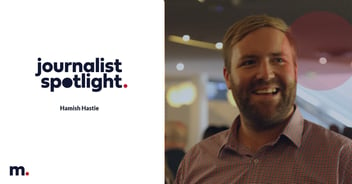The Art of Budget PR: How to make your message heard and your voice count
The federal budget announcement is one of the most high-profile events in the political calendar, and it presents a unique opportunity for organisations to gain media coverage and share their policy positions. However, with so many stakeholders vying for attention, it can be tough to know where to start or how to best approach your PR efforts. Here are some tips to make sure you get the most out of your budget PR comms.
Timing
Any public relations outreach around the federal budget should consider the mindset of journalists at every stage of the announcement.
The pre-budget phase is when journalists are making predictions about what might be included in the budget ahead of its announcement. For PR pros, this is when policy positions and advocacy take place. If you want to influence public opinion, policy and the media, this is the time to do it while journalists are looking for content in the lead up to the big night.
Be proactive in reaching out to journalists with your key messages well ahead of the announcement. With so much competition during the announcement, you want to establish your value and credibility with media contacts well ahead of time.
By reaching out to journalists during this period, you can help to shape the conversation and position yourself as a thought leader in your field. This can also help to ensure that your message is not lost in the flood of coverage that typically accompanies Budget night itself.
If you are looking to react to the announcement instead, do it on the night of the budget announcement, as soon as you can. Have your material ready to go and don’t wait until the next day. Any budget-related commentary should be released within 24 hours of the announcement or it will not receive any media coverage.
Know your value proposition
Journalists are looking for valuable contributions that add to the debate, so it's critical to know your value proposition and be able to articulate it clearly. Do you have data to back up your position? Are you an expert in a particular field? What unique insights can you bring to the table?
Resources such as the Medianet Budget Toolkit released last year can help understand the approach taken by different outlets. As an organisation, you need to be aware of the topics covered by different media outlets, their sentiment towards the budget, and the sources they use. This can help you prepare a pitch that resonates with the journalists and stands a higher chance of being covered.
We know from our research that the most commonly discussed topic for the last three years was taxation, making up around 35% of all articles. The other most commonly discussed topics were retail, transport, roads and infrastructure, health and pharmaceuticals, and gender and women's issues. However, different outlets have historically focused on different topics. For instance, The Guardian took a special interest in health and gender and women's issues, while the Sydney Morning Herald focused more on retail and transport.
We also know that different outlets report with a slightly different sentiment towards the budget. Depending on their political stance and that of the government in charge, you might have to align your messaging to the outlet’s point of view to get more engagement.
The trends do change every year, however, we know that for the most part budget coverage centers around five key topics with an additional topic or two depending on what is happening in politics or finance. This year we expect to see more coverage around Defence, climate change and welfare due to the high cost of living.
Reactions? Be quick, available and get to the point quickly
On the day of the announcement, journalists are literally “locked up” in Canberra reviewing the budget documents ahead of its announcement. It’s a time of enormous pressure to get articles out quickly once they are allowed to, so it's essential to be able to provide quick quotes and concise messaging straight after the budget announcement.
As explained by Dr Jane Rennie, General Manager Media and Content from CPA Australia, “(...)the moment that lockup ends, that first wave of articles will come out immediately afterwards. And then there'll be there will be second wave, which are more likely to feature that sort of reaction commentary from special interest groups, and from the organisations.”
24 hours Any budget-related commentary should be released within 24 hours of the announcement or it will not receive any media coverage.
Your press release needs to get to the point within the first paragraph. As discovered by our latest Media Landscape Report, journalists read less than a paragraph to consider a story. If that is true at any time of the year, it is even more relevant on budget night!
When you are pitching, explain what component of the budget you are reacting to or commenting on, and your position. There is little value in explaining the details of the actual budget announcement as journalists already know what has been announced. It is your unique point of view and ability to make this relevant to their audience that makes you important for journalists and the story.
Make sure your media release is written well and gets to the point quickly, and be available to respond to any follow-up questions. Your spokesperson should be available to answer questions on the night and the day after.
Establish goals and the right channels to achieve them
Media is only one of many channels to get your message heard.
When preparing your strategy around the federal budget, it is worth reflecting on what are your actual goals and what are the best channels to fulfil those goals.
“I think one of the opportunities that organisations sometimes overlook is the fact that there are a lot of opportunities to get commentary and to get messages in the media in the lead up to the budget. So in those couple of weeks ahead of time is actually where you can get the biggest impact.”
Dr Jane Rennie, General Manager Media and Content - CPA Australia
For example, if your goal is to influence what's in the budget, it may be more effective to engage directly with policymakers and politicians, rather than relying on media coverage.
Alternatively, you may want to focus on educating your clients or members, in which case targeted email or social media campaigns may be more appropriate.
If your organisation wants to influence policy and media coverage, and make a position statement known, media is the way to go.
Finally, don't limit yourself to traditional media channels. Consider social media, podcasts, webinars, and short videos to reach different audiences and get your message out in addition to the media.
Evaluate your media coverage
After the announcement, it's critical to evaluate your media coverage to determine the quality and impact of your media strategy. You may want to know how many ‘hits’ you got as a first layer of success metric, however that is not the full story, especially when you are trying to influence policy and public opinion.
Metrics such as sentiment, prominence, and key message delivery are more effective to assess the impact of those hits and how that impact tangibly helps achieve the objectives of your organisation.
In conclusion, earning media coverage requires a strategic approach. To be successful, you must have strong news value, develop relationships with journalists, and be proactive in your approach. With the federal budget announcement coming up, now is an excellent opportunity to get your message out there and generate media coverage.

.png?width=1200&length=1200&name=Federal%20Budget%20Planning%20Carousel%20(1).png)
.png?width=1200&length=1200&name=Federal%20Budget%20Planning%20Carousel%20(2).png)
.png?width=1200&length=1200&name=Federal%20Budget%20Planning%20Carousel%20(3).png)
About the Author





